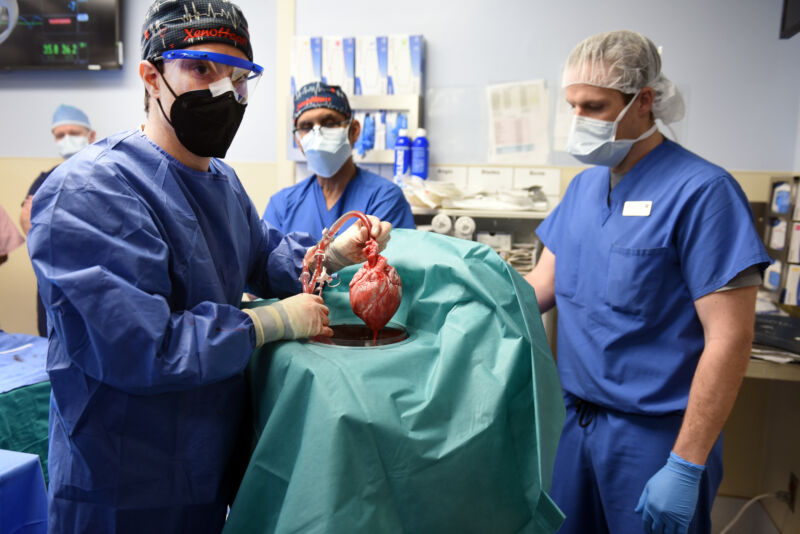On Monday, the University of Maryland School of Medicine announced that its staff had done the first transplant of a pig's heart into a human. The patient who received it had end-stage heart disease and was too sick to qualify for the standard transplant list. Three days after the procedure, the patient was still alive.
The idea of using non-human organs as replacements for damaged human ones—called xenotransplantation—has a long history, inspired by the fact that there are more people on organ waiting lists than there are donors. And, in recent years, our ability to do targeted gene editing has motivated people to start genetically modifying pigs in order to make them better donors. But the recent surgery wasn't part of a clinical trial, so it shouldn't be viewed as an indication that this approach is ready for widespread safety and efficacy testing.
Instead, the surgery was authorized by the FDA under its "compassionate use" access program. This allows those faced with life-threatening illnesses to receive investigational treatments that haven't gone through rigorous clinical testing yet.
The heart used for this transplant did come from a genetically modified line that was specifically engineered to reduce the chance of rejection by the human immune system. There are a number of lines that have been engineered with this in mind (there's a review of some of the competing ideas on what to modify). This line was developed by a company called Revivicor (now part of United Therapeutics), but the company doesn't provide any details on its website of the precise changes made. Searching for Revivicor on ClinicalTrials.gov returns only a single hit that involves a completely different pig line.
So it's difficult to know exactly what genes were modified in these pigs. The University of Maryland's press release indicates that there were three pig genes knocked out to lower its immune profile and avoid rejection, and a fourth knocked out to block "excessive growth" of the porcine cells. In addition, six human genes were inserted into the pigs to enhance the human immune system's tolerance of the foreign cells. While it's easy to speculate on what these genes might be, the potential list of targets is much larger than what has actually been edited.
Given the amount of effort that has gone into generating the pig lines, it was clearly a matter of time before these sorts of transplants were attempted. But the lack of details about the commercially developed heart donor mean that it's difficult to judge this first effort on a scientific level. And the fact that the transplant took place without a transparent plan for assessing the safety of the transplant raises questions of how informative the first effort will be.
From a human standpoint, however, someone who has been in the hospital for months for lack of a properly functioning heart now has one. And its ability to remain functional will likely tell us something.



3175x175(CURRENT).thumb.jpg.b05acc060982b36f5891ba728e6d953c.jpg)

Recommended Comments
Join the conversation
You can post now and register later. If you have an account, sign in now to post with your account.
Note: Your post will require moderator approval before it will be visible.